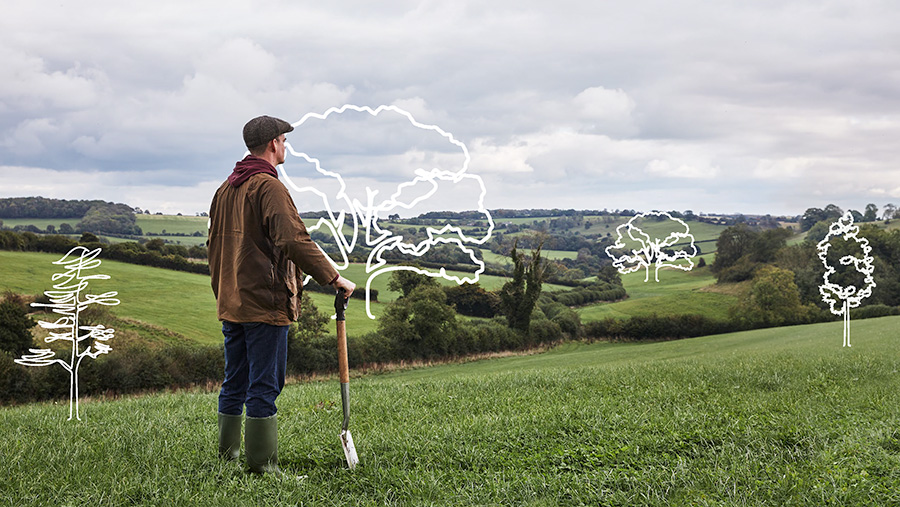Advertiser content
Growing your business with trees
Planting trees in the right places can yield big benefits to farm businesses, and the potential to make extra income while supporting existing farming activities.

In the right place, planting trees can complement farming activities and bring benefits to arable and livestock systems, biodiversity, and the bottom line.
Every farm – and business – is different, so tree planting options must be appropriate; there’s no one-size-fits-all answer. For livestock producers, it might be shelter-belts to provide shade and selective grazing; for arable producers it could be intercropping or buffer strips. Others may want to plant larger plots on less productive land for farm diversification – from tourism to timber, there are many good options.
“Defra’s different tree grants support planting and woodland creation projects of all shapes and sizes,” say Defra’s tree programme directors Bella Murfin and Naomi Mathiessen.

© West Cumbria Rivers Trust
Our national England Woodland Creation Offer provides grants to plant woodland over an area of one hectare upwards although this can comprise different lots from 0.1ha each. There are also regional grants across many parts of England, using more tailored grants to secure particular benefits for the local area.
Ally Hunter Blair, an arable tenant farmer in Herefordshire, is considering planting small coppices on awkward corners and banks that are currently in a Mid-Tier scheme. “Taking good agricultural land out of production has always been a red flag when it comes to tree planting. However, now the grants are truly flexible and there is help and advice that can be accessed with a simple email,” he says.
“I would encourage people to take the first step by enquiring about the grants and looking at areas of their farms [on which to plant trees] that might benefit both their businesses and the environment.”

© The Forestry Commission
There are two main types of government grant available – the England Woodland Creation Offer (EWCO), which is a national scheme administered by the Forestry Commission, covers standard capital costs up to £10,200/ha and stackable payments of up to £8,000/ha for projects that support wider benefits to society, nature recovery and the environment.
Regional Woodland Creation Grants operate within local catchment areas and are tailored to individual farm circumstances. These grants cover up to 100% of costs. Both offer free expert support and advice to ensure the right trees are planted in the right place, for the right reason.
Benefits of planting trees
- Sequester carbon and absorb harmful gases.
- Protect against soil erosion, particularly important in hilly areas or alongside rivers.
- Boost biodiversity – for example, a single oak can support 2,300 species, including beneficial pollinators.
- Improve water quality and nutrient use efficiencies. A 10m belt by a river decreases sediment run-off by 90-100%, nutrient losses by 20-80% and pesticide loss by 60-100%, keeping valuable inputs and soil where they’re needed.
- Income generation through timber, woodfuel, recreation and leisure, and possibly selling woodland carbon units or other green finance products.
- Co-benefits of agroforestry; improved soil quality and farm productivity.
To find out more about the Woodland Creation grants and support, visit gov.uk/woodland-creation
Or for information on how to get paid for wider environmental benefits, consider the Sustainable Farming Incentive: www.gov.uk/guidance/funding-for-farmers

Provided by
Farmers and landowners in England can plant trees through the England Woodland Creation Offer (EWCO) which encourages investment in the creation and long-term management of woodland. So what does it involve?
Provided by Defra and the Forestry Commission.
